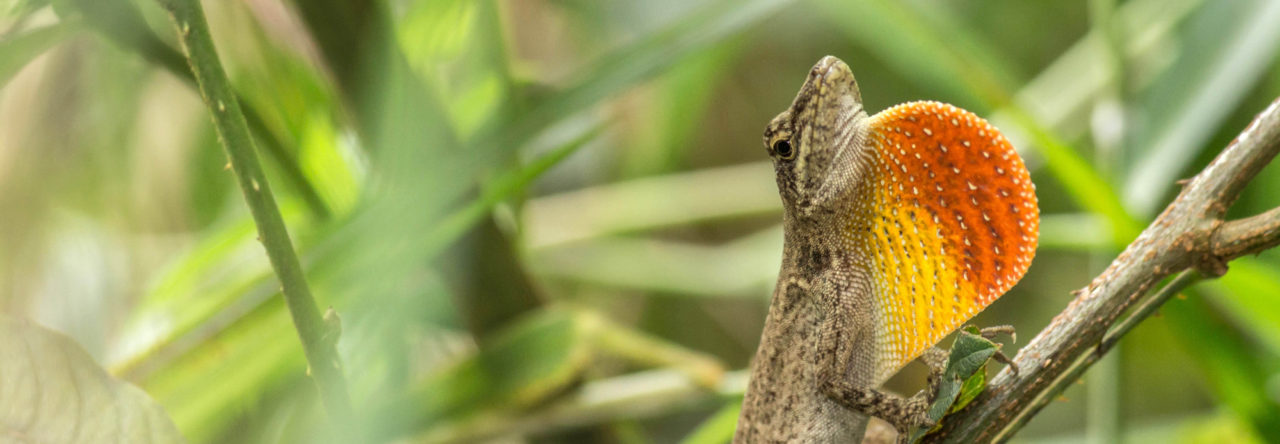
Variation in the back patterns of Anolis sagrei in the Bahamas. From Calsbeek and Cox (2010).
The confusing conundrum of the polymorphic females continues. We’ve written about this phenomenon in previous posts [e.g., 1,2]. Within and between populations, female back patterns vary, including lines, stripes, diamonds, blotches, and nothing at all. What is the significance of this variation? In some cases, but not others, females with different patterns use different microhabitats–higher, wider, etc.
The latest contribution features work on the Bahamian island of Eleuthera, where three patterns co-occur. Writing in Herpetologica, Les et al. add a new twist–back pattern variants differ in hindlimb length. But they don’t differ in sprint speed (which is weakly correlated to body size and relative limb length) or to perch diamter. But they do differ in perch height. Another brick in the wall of female pattern polymorphism, but it doesn’t make the picture any clearer.
Here’s the abstract:
The Brown Anole (Anolis sagrei) is a polymorphic species, with females often exhibiting one of three distinct pattern morphs. Efforts to correlate female-limited pattern polymorphism in anoles to ecological or physiological factors have largely been unsuccessful, with such correlations being either inconsistent among species or among populations of a single species. To test the hypothesis that morph types would differ in their response to putative predators, we observed escape behavior in 84 female A. sagrei from Cape Eleuthera (Eleuthera, Bahamas) and tested 103 females for sprint speed. We found differences between morph types in hindlimb span and perch height. Differences in sprint speed were not significant, nor did morphs differ in escape responses. We suggest further studies to determine whether differences between morphs in hindlimb span are genetic or plastic, and, if plastic, what factor might be responsible. We conclude that perching at different heights could be selectively advantageous for different morph types, and that differences among individuals in sprint speed are largely consequences of hindlimb length. Because morphs in this population did not differ in escape responses, we suggest that different dorsal patterns are not linked to specific behaviors that could reduce detection by a potential predator.
- Evolution in Real Time on Lizard Island - March 23, 2025
- Spider Snags Adult Anolis osa - March 22, 2025
- An Homage to the Green Anoles of New Orleans - March 21, 2025


Rick Armas
What an awesome, informative website!!!
Thank you so much!!!